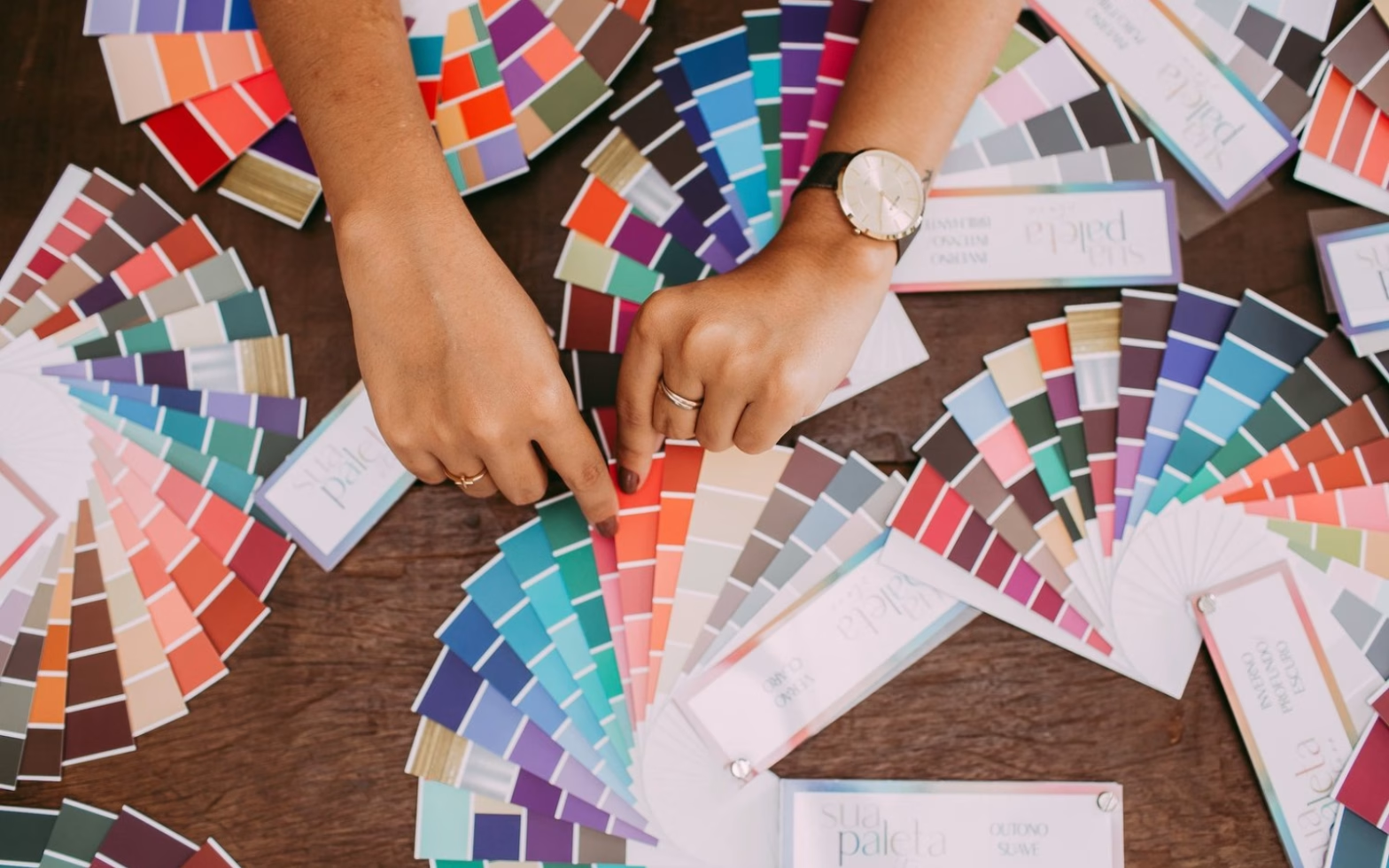Colour psychology plays a crucial role in shaping our environment and influencing our emotions. The paint colours we choose for our homes have a significant impact on our mood, energy levels, and overall well-being. Understanding how different hues affect our psychological state can help us create spaces that promote the atmosphere we desire.
This blog explores how to use colour psychology to select the perfect paint for your home. It delves into the meanings associated with various colours, from energetic oranges to calming whites. Readers will learn about warm colours that create lively spaces and cool tones that foster relaxation. By the end, they’ll know to make informed decisions about paint colours that align with their emotional goals for each room.
Understanding Colour Psychology
Colour psychology plays a crucial role in shaping our environment and influencing our emotions. The science behind colour and mood has been studied for centuries, with significant contributions from renowned figures like Isaac Newton and Johann Wolfgang von Goethe. Their work laid the foundation for understanding how different hues can evoke emotional and psychological responses in individuals.
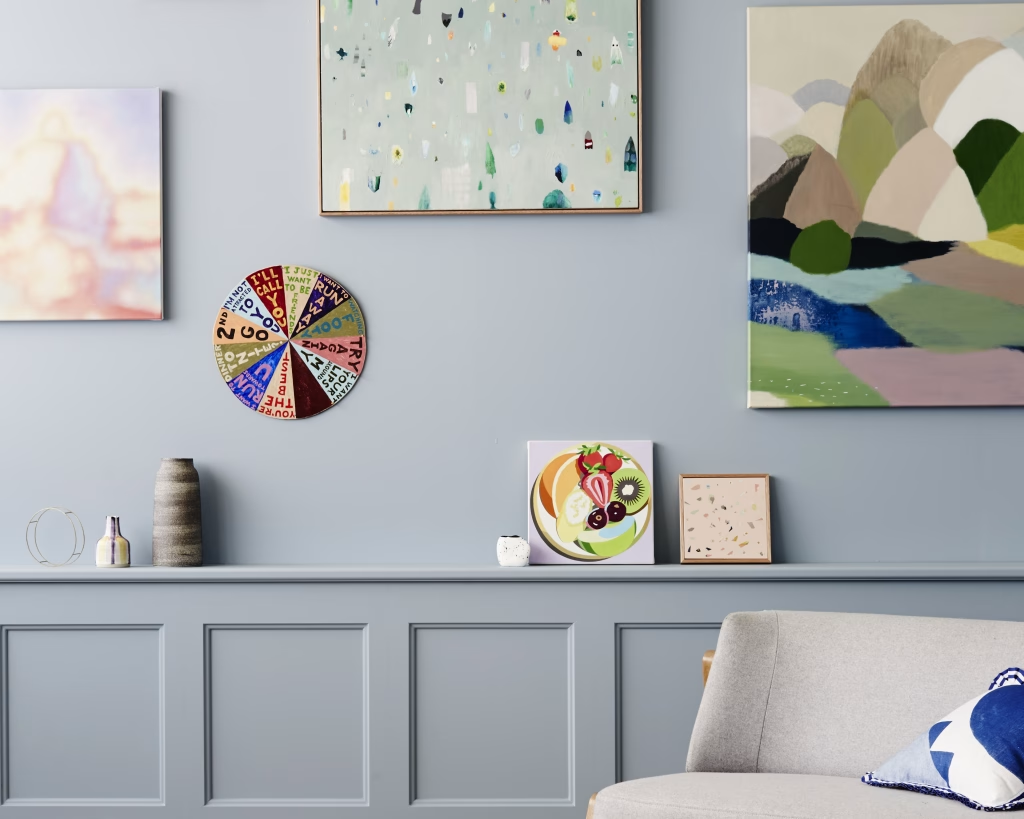
Research has shown that colours can have a profound impact on our mental state and physical well-being. For instance, exposure to certain colours can affect heart rate, blood pressure, and even body temperature. This scientific basis has led to the development of colour therapy, also known as chromotherapy, which uses specific colours and their frequencies to influence mood and behaviour.
While more research is needed to fully comprehend the links between colour and mood, studies have demonstrated that carefully selecting a colour scheme for your home can have a positive impact on mental health and well-being. The psychological effects of colour are based on the scientific impact of different hues of the colour spectrum on the human brain.
How different colours affect emotions
Different colours can evoke distinct emotional responses and psychological effects in individuals. Understanding these associations is crucial when choosing paint colours for your home. Here’s how some common colours affect emotions:
Red: This vibrant colour is associated with passion, excitement, and energy. It can raise body temperature, pulse rate, and blood pressure. Red has the power to stimulate and energise, making it suitable for spaces where you want to encourage activity and social interaction.
Blue: Known for its calming properties, blue can lower body temperature, pulse rate, and blood pressure. It’s often associated with tranquillity, serenity, and trust. Blue environments have been found to enhance focus and productivity, making it an excellent choice for bedrooms or study areas.
Green: This colour has a strong connection to nature and is often perceived as calming and restful to the eyes. Green has connotations of health and well-being, making it ideal for creating a relaxing atmosphere in living spaces.
Yellow: Associated with sunshine and happiness, yellow can stimulate mental activity and muscle energy. It’s known to evoke feelings of cheerfulness and optimism, making it suitable for kitchens or dining areas.
Orange: This warm colour is often linked to creativity and enthusiasm. It can create a cheerful response, which explains its popularity in commercial settings.
Purple: Combining the conflicting values of warmth and coolness, purple can evoke feelings of creativity and luxury. However, it should be used cautiously as it can be disturbing to some observers.
White: Often associated with cleanliness and purity, white can create a sense of spaciousness and clarity. It’s a popular choice for modern interiors and can help to brighten up small spaces.
Cultural and personal associations with colours
It’s important to note that colour meanings can vary significantly across different cultures. What may be considered a positive colour in one culture could have negative connotations in another. For example, while white is associated with purity and weddings in many Western cultures, it’s often linked to mourning in some Eastern societies.
Similarly, red is seen as a symbol of good fortune in Chinese culture, while it may represent danger or caution in other parts of the world. These cultural differences in colour associations are crucial to consider when selecting paint colours, especially in multicultural environments.
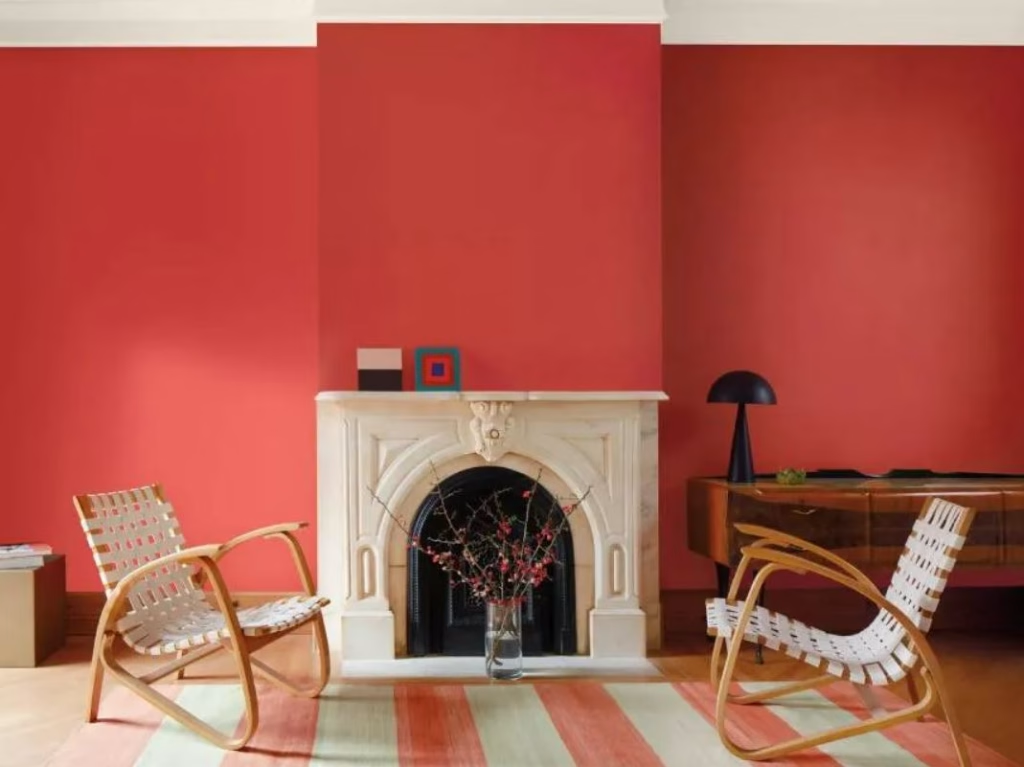
Personal experiences and preferences also play a role in how individuals perceive and respond to colours. What one person finds calming, another might find stimulating. Therefore, when choosing paint colours for your home, it’s essential to consider not only the general psychological effects of colours but also your personal and cultural associations with them.
By understanding the science behind colour psychology, how different colours affect emotions, and the cultural and personal associations with colours, you can make informed decisions when selecting paint colours for your home. This knowledge will help you create spaces that not only look aesthetically pleasing but also positively impact your mood and well-being.
Warm Colours for Energetic Spaces
Warm colours have a significant impact on our emotions and can create energetic and vibrant spaces in our homes. These hues, including red, orange, and yellow, have the power to evoke feelings of passion, creativity, and cheerfulness. Understanding how to use these colours effectively can help create spaces that inspire and invigorate.
Red: Passion and excitement
Red is a bold and commanding colour that has a profound effect on our emotions and behaviour. It’s often associated with energy, passion, and warmth, making it a powerful tool in interior design. When used thoughtfully, red can transform a space, adding drama and interest to a room.
In small doses, red can serve as an excellent accent colour. A red feature wall, rug, or piece of furniture can add a pop of colour and create a focal point in a room. However, it’s crucial to use red wisely, as too much can be overwhelming and even stressful. To achieve balance, pair red with neutral colours such as white, grey, or black. This combination creates a harmonious and calming effect while still maintaining the energy that red brings to a space.
Different shades of red can evoke various emotions. For instance, a deep burgundy paired with gold accents can introduce a luxurious ambiance in formal settings. On the other hand, a vibrant cherry red can add a lively touch to a kitchen or dining area, encouraging social interaction and stimulating appetite.
Orange: Creativity and enthusiasm
Orange is a warm colour that combines the energy of red with the cheerfulness of yellow. It’s often associated with creativity, enthusiasm, and vitality, making it an excellent choice for spaces where you want to encourage innovation and dynamic thinking.
The colour orange has a strong connection to the second chakra, which is linked to creativity and sexual energy. This association makes orange particularly effective in areas where you want to stimulate creative thinking or foster a sense of warmth and comfort.
When using orange in your home, consider incorporating it through accessories or accent pieces. An orange throw pillow, artwork, or even a painted piece of furniture can add a burst of energy to a room without overwhelming the space. Orange also pairs well with other warm tones, creating a cosy and inviting atmosphere.
For a more subtle approach, consider using muted shades of orange, such as terracotta or peach. These softer hues can add warmth to a space without being too intense, making them suitable for larger areas like living rooms or bedrooms.
Yellow: Cheerfulness and optimism
Yellow is the colour of sunshine, flowers, and lemons, bringing a fresh and cheerful appeal to interiors. It’s known for its ability to evoke feelings of happiness, optimism, and energy, making it an excellent choice for spaces where you want to create a lively and uplifting atmosphere.
When decorating with yellow, even small doses can quickly perk up a room. A light-filled breakfast nook, for example, is the perfect candidate for a sweep of sunny yellow. This colour can make a space feel brighter and more spacious, especially in rooms with limited natural light.
To create a balanced look, pair yellow with cooler colours like blue or green. This combination serves as a crisp complement, making the yellow stand out and appear even more vibrant. For a classic and sophisticated look, consider pairing yellow with grey, replicating the look of a partly cloudy sky.
When selecting yellow for your home, consider the intensity of the shade. Bright, saturated yellows can be energising but may be too intense for large areas. Softer, more muted yellows with brown undertones can act as neutrals, providing warmth without overwhelming the space.
By understanding how to use warm colours like red, orange, and yellow effectively, you can create energetic spaces that inspire and invigorate. Remember to balance these bold hues with neutral tones and consider the purpose of each room when selecting your colour scheme. With thoughtful application, these warm colours can transform your home into a vibrant and welcoming environment.
Cool Colours for Calming Environments
Cool colours have a significant impact on creating serene spaces within the home. These hues, including blue, green, and purple, have the power to evoke feelings of relaxation, balance, and creativity. Understanding how to use these colours effectively can help create environments that promote calmness and well-being.
Blue: Serenity and relaxation
Blue is widely recognised for its soothing properties and has a profound effect on our emotions and behaviour. It’s often associated with tranquillity, trust, and confidence, making it an excellent choice for creating calming environments in the home.
Different shades of blue can evoke various emotions and atmospheres. Lighter shades, such as seafoam or sky blue, can create a fresh and peaceful atmosphere, perfect for bedrooms or bathrooms. These hues are reminiscent of clear skies and calm waters, bringing a sense of serenity to any space.
Darker shades of blue, like navy or midnight blue, can add depth and richness to a room while still maintaining a calming effect. These deeper tones are particularly effective in creating cosy and intimate spaces, such as reading nooks or home offices.
To achieve a balanced look, consider pairing blue with neutral colours like white or grey. This combination creates a harmonious and calming effect while maintaining visual interest. For a more dynamic approach, blue can be complemented with warmer tones like orange or yellow, creating a vibrant yet balanced colour scheme.
Green: Balance and harmony
Green is a versatile colour that combines the freshness of yellow with the calmness of blue. It’s strongly associated with nature, growth, and renewal, making it an excellent choice for creating balanced and harmonious environments in the home.
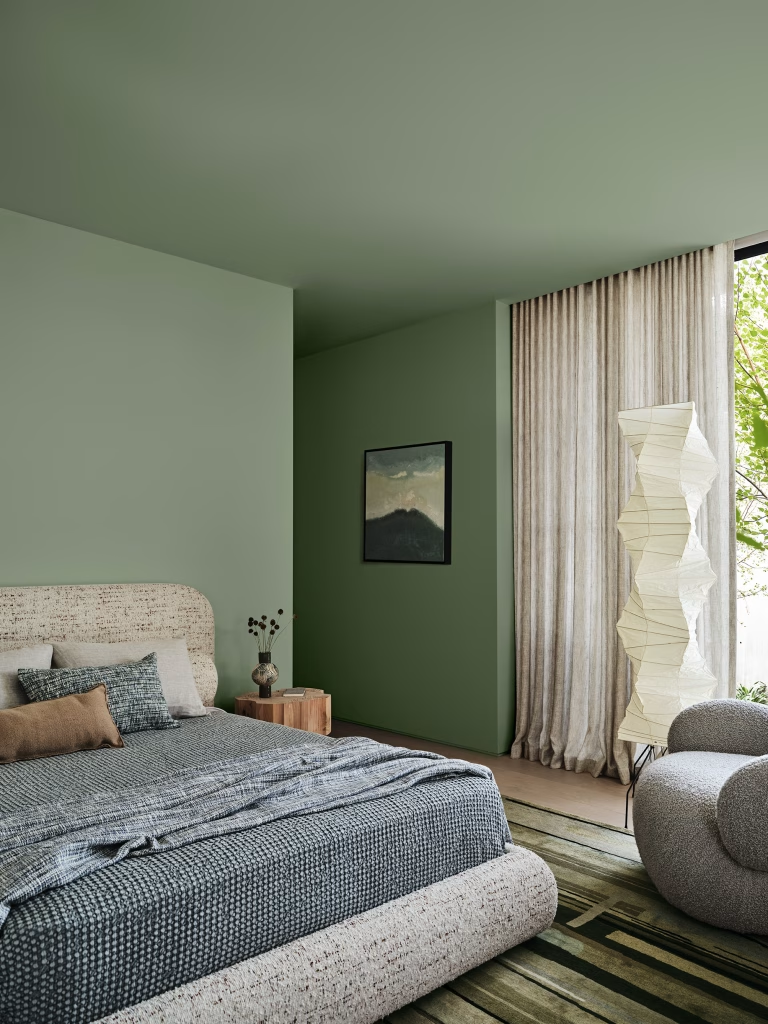
The psychological impact of green in interior spaces is significant. It promotes a sense of balance and tranquillity, creating a peaceful atmosphere that can help reduce stress and anxiety. Green is also linked to growth and rejuvenation, inspiring feelings of positivity and well-being.
When incorporating green into your home decor, consider using various shades to create depth and interest. Lighter shades like mint or sage can bring a fresh and airy feel to a space, while deeper tones like forest or olive green can add richness and sophistication.
Green pairs well with natural materials like wood, further enhancing its connection to nature. It can also be combined with other cool colours like blue or purple to create a serene and cohesive colour scheme.
Purple: Luxury and creativity
Purple is a unique colour that combines the stability of blue with the energy of red. It’s often associated with luxury, creativity, and spirituality, making it an intriguing choice for creating calming yet inspiring environments in the home.
The psychological properties of purple are complex and varied. It’s believed to stimulate the imagination and inspire high ideals, making it an excellent choice for spaces dedicated to creativity or contemplation. Purple also promotes harmony of the mind, contributing to mental balance and peace.
When using purple in interior design, it’s essential to consider the intensity of the shade. Lighter purples, such as lavender or lilac, can create a soft and dreamy atmosphere, perfect for bedrooms or meditation spaces. Deeper purples, like aubergine or plum, can add a sense of luxury and sophistication to living areas or dining rooms.
To balance the richness of purple, consider pairing it with neutral tones like white or grey. This combination can create a serene and elegant environment. For a more dynamic look, purple can be complemented with its opposite on the colour wheel, yellow, creating a vibrant yet balanced colour scheme.
By understanding how to use cool colours like blue, green, and purple effectively, you can create calming environments that promote relaxation, balance, and creativity in your home. Remember to consider the purpose of each room and your personal preferences when selecting your colour scheme. With thoughtful application, these cool colours can transform your living spaces into serene and inspiring retreats.
Conclusion
The art of choosing paint colours for your home goes beyond mere aesthetics. It has a profound influence on your mood, energy levels, and overall well-being. By understanding colour psychology, you can create spaces that not only look appealing but also foster the atmosphere you desire. Whether you’re looking to energise a room with warm hues or create a calming retreat with cool tones, the right paint colour can transform your living space.
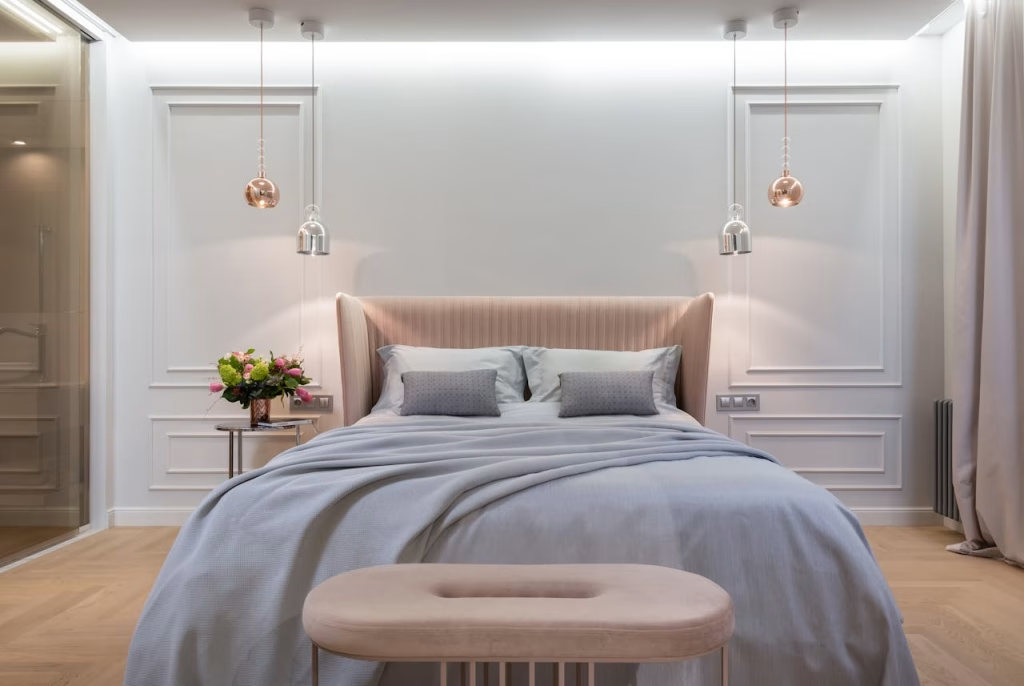
Remember, personal preferences and cultural associations play a big role in colour perception. So, while these guidelines provide a starting point, trust your instincts and choose colours that resonate with you. Experimenting with different shades and combinations can help you find the perfect palette to make your house feel like home. In the end, the colours you choose should reflect your personality and create an environment where you feel comfortable and inspired.
FAQs
How should I select the appropriate paint colour for my home?
To choose the right paint colour, start by drawing inspiration from items you already have at home, such as a cherished rug or a piece of artwork. Consider the size of the room and the sources of light it receives. It’s also important to ensure a smooth transition of colours from one room to another. Lastly, think about the psychological effects of different colours to achieve the desired mood in each room.
How can colour psychology be implemented in interior design?
Colour psychology can be effectively used in interior design by selecting warm colours to foster a cosy and inviting atmosphere, while cool colours can help achieve a serene and tranquil environment. Vibrant and bold colours are excellent choices for stimulating activity and creativity within a space.
What impact does colour psychology have in home environments?
The psychology of colour plays a significant role in home environments. Bright and cheerful colours can enhance mental activity and leave you feeling revitalised and energetic, which is particularly beneficial for those experiencing depression or fatigue. On the other hand, darker and more subdued colours can help reduce energy levels if you feel overstimulated or anxious.

